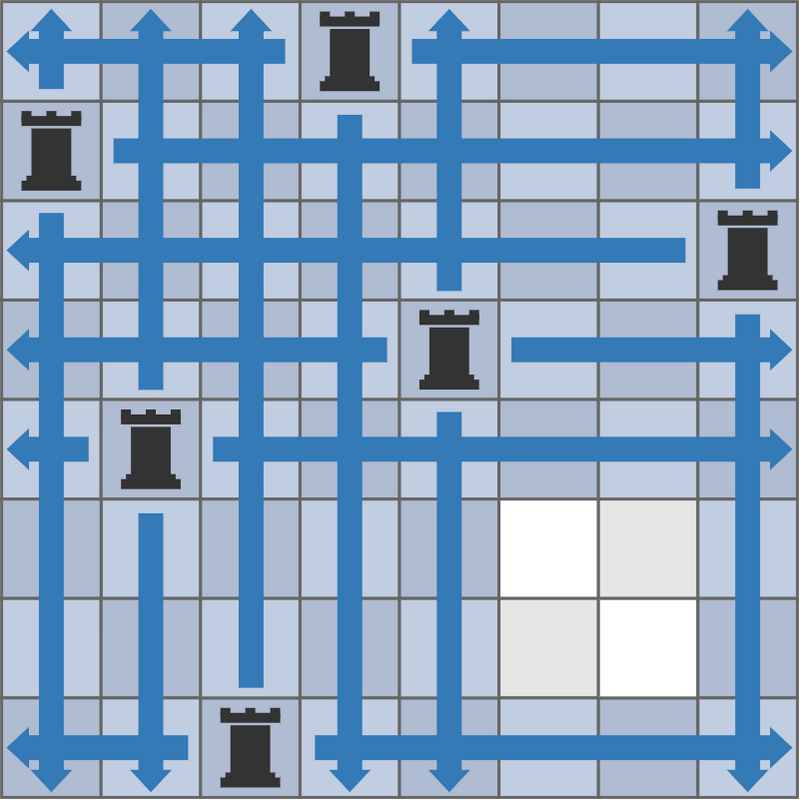11342: ABC377 - B - Avoid Rook Attack
Description
There is a grid of $64$ squares with $8$ rows and $8$ columns. Let $(i,j)$ denote the square at the $i$-th row from the top $(1\leq i\leq8)$ and $j$-th column from the left $(1\leq j\leq8)$.
Each square is either empty or has a piece placed on it.
The state of the squares is represented by a sequence $(S_1,S_2,S_3,\ldots,S_8)$ of $8$ strings of length $8$.
Square $(i,j)$ $(1\leq i\leq8,1\leq j\leq8)$ is empty if the $j$-th character of $S_i$ is ., and has a piece if it is #.
You want to place your piece on an empty square in such a way that it cannot be captured by any of the existing pieces.
A piece placed on square $(i,j)$ can capture pieces that satisfy either of the following conditions:
- Placed on a square in row $i$
- Placed on a square in column $j$
For example, a piece placed on square $(4,4)$ can capture pieces placed on the squares shown in blue in the following figure:

How many squares can you place your piece on?
Input
The input is given from Standard Input in the following format:
$S_1$
$S_2$
$S_3$
$S_4$
$S_5$
$S_6$
$S_7$
$S_8$
Output
Print the number of empty squares where you can place your piece without it being captured by any existing pieces.
Constraints
- Each $S_i$ is a string of length $8$ consisting of
.and#$(1\leq i\leq 8)$.
Sample 1 Input
...#....
#.......
.......#
....#...
.#......
........
........
..#.....
Sample 1 Output
4
The existing pieces can capture pieces placed on the squares shown in blue in the following figure:

Therefore, you can place your piece without it being captured on $4$ squares: square $(6,6)$, square $(6,7)$, square $(7,6)$, and square $(7,7)$.
Sample 2 Input
........
........
........
........
........
........
........
........
Sample 2 Output
64
Sample 3 Input
.#......
..#..#..
....#...
........
..#....#
........
...#....
....#...
Sample 3 Output
4